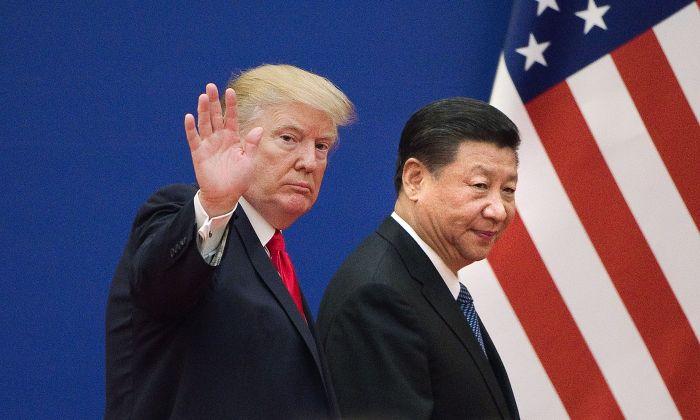On the eve of increased Chinese tariffs on U.S. imports taking effect, the Chinese regime has announced its latest retaliatory move in the U.S.-China trade dispute: it is preparing to set up an “unreliable entity list” of foreign enterprises, organizations, and individuals who damage Chinese firms’ benefits.
The name “entity list” echoes the U.S. Commerce Department’s. On May 15, it placed Chinese telecom giant Huawei on an entity list on national security grounds, which effectively banned the firm from doing business with U.S. companies. As Huawei buys a significant amount of U.S. software and components from U.S. companies and other firms that use U.S.-origin tech, the export ban has dealt a heavy blow to the Chinese company.
Gao Feng, China’s Ministry of Commerce spokesman, said at a May 31 press conference: “[Some foreign entities] have blocked, stopped supplying, and taken other discriminatory measures on Chinese companies for non-commercial reasons. It seriously damages Chinese companies’ rights and interests, and endangers China’s national security and interests.”
Gao did not provide details about which kind of companies or individuals the Chinese regime would include on the list, nor the punitive measures that would be imposed.
He also did not explain why damaging Chinese companies’ interests would constitute endangering China’s national security.
After Gao’s statement, Chinese state media began publishing articles touting the Chinese regime’s “powerful” move in launching the entity list.
U.S.-China Trade Talks
During a May 30 press conference with the Ministry of Commerce, Gao was asked about the progress of U.S.-China trade talks. He answered: “The talks have encountered serious setbacks.”Gao also criticized the United States heavily and said the trade talks have reached a stalemate.
Trade tensions recently escalated after U.S. President Donald Trump announced in early May that it would increase tariff rates to 25 percent from 10 percent on $200 billion worth of Chinese goods. U.S. officials said the Chinese side had reneged on commitments previously negotiated during months of talks.
After two-days talks in Washington D.C. ending on May 10, the negotiating teams from both parties could not reach an agreement.
In retaliation, China announced on May 13 that it would increase tariffs ranging from 5 to 25 percent on 5,140 U.S. products, worth about $60 billion beginning June 1.
The United States has also begun the process for imposing new tariffs on an additional $325 billion worth of Chinese goods.
Negotiation Tactic
Robert Atkinson, president of Washington-based think tank Information Technology and Innovation Foundation, said the announcement was a negotiation tactic ahead of scheduled trade talks between Trump and Chinese leader Xi Jinping at the G-20 summit in Japan in June.“That’s how they negotiate. They do this all the time,” Atkison told the Epoch Times in a May 31 interview.
“If they’ve done something wrong and you say I’m going to do something in response, they then ratchet up what they do even though they were the ones … [who] were wrong in the first place. That’s their modus operandi.”
Atkinson said the regime would be shooting itself in the foot if it punished U.S. companies, given Chinese companies’ reliance on U.S. technologies. For instance, many Chinese tech firms rely on U.S.-manufactured chips, as well as software from American firms like Google and Microsoft.
Atkinson added that such a retaliatory move would also spur American companies to relocate their production to other countries in Southeast Asia, such as Vietnam and Malaysia.
Some have already decided to do so; Apple will begin assembling its top-end iPhones in India through the local unit of Foxconn. Apple previously mostly manufactured its products in China, but U.S. tariffs have been imposed on many electronic parts and components commonly found in electronic devices, such as motherboards and power supplies, that are made in China.
A top U.S.-based group that advocates for strong business relations with India recently revealed that about 200 U.S. companies have contacted them about the possibility of setting up an alternative manufacturing base in India to replace their current assembly lines in China.
Other experts have also condemned the Chinese regime’s tactics amid the escalated trade tensions. Elliott Zaagman, writer at the U.S. think tank Lowy Institute, posted a diagram on Twitter May 22, showing that Beijing has banned more than one hundred American firms from doing business in China, while the U.S. administration has so far only outright banned Huawei from the U.S. market.
Meanwhile, Hosuk Lee-Makiyama, economist and director at the European Centre for International Political Economy, asked: “What does China have left to retaliate with?” in an interview with U.S. tech website Verge on May 29.
With reporting by Cathy He.





